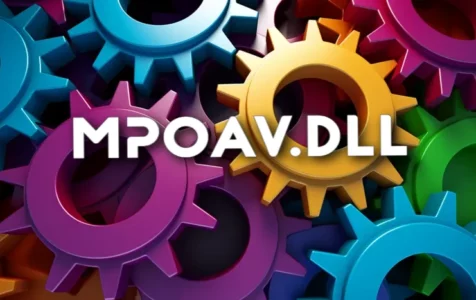When delving into the depths of Microsoft Windows, it’s not uncommon to come across a variety of intricate files, each playing a significant role in the system’s operation. One such file is MpOav.dll, a Dynamic Link Library (DLL) file that is intricately woven into the fabric of Windows’ security measures—most notably, as a component of Windows Defender.
Windows Defender, the shield against cyber threats, features MpOav.dll as part of its arsenal, guarding your digital environment against malware. The file resides snugly within a certain pathway on your computer, typically found at C:\ProgramData\Microsoft\Windows Defender\platform\4.18.2003.8-0\X86. Where Windows Defender acts as the vigilant protector, MpOav.dll serves as one of its many sentinels, primarily scanning Microsoft Office files for potential dangers and ensuring no malicious intent lurks within your documents.
Is It Safe to Run MpOav.dll?
Windows Defender forms an intrinsic layer of protection in the Windows operating system, developed by none other than Microsoft Corporation itself. Given its origin, MpOav.dll is generally considered safe and forms an essential cog in the Windows security mechanism.
However, caution is a companion in the world of cybersecurity. It’s always worth scanning the digital signature of the MpOav.dll file for peace of mind, ensuring it aligns with Microsoft’s credentials. Occasionally, crafty villains may disguise malware with familiar names, so a vigilant eye remains essential.
Expert Tip: For smoother PC performance, consider using a PC optimization tool. It handles junk files, incorrect settings, and harmful apps. Make sure it's right for your system, and always check the EULA and Privacy Policy.
Special offer. About Outbyte, uninstall instructions, EULA, Privacy Policy.
Could It Be a Camouflaged Villain—A Virus or Malware?
While MpOav.dll, in its legitimate form, is a trusted soldier in the defense against virtual threats, impostors are always a possibility. Ensure it’s located within the legitimate Windows Defender directory, as mentioned previously. If the file resides outside this location or lacks a verified digital signature from Microsoft, raise the alarm—it could indeed be malevolent software masquerading as a protector.
Tackling Problems with MpOav.dll
Encounters with issues surrounding MpOav.dll aren’t the day’s highlight, but solutions are at hand:
1. Verify the legitimacy of the file with security software checks.
2. Utilize system utilities like System File Checker (SFC) to repair any integrity issues.
3. In some cases, achieving peace might involve restoring the system to a snapshot before problems arose.
4. If MpOav.dll is missing in action, reacquire the file from a trusted source and register it within the system.
Community discussions may provide additional insights and experiences from fellow users navigating similar troubled waters.
In the scenario that you’ve sailed into the territory of a system-wide reinstall—whether due to MpOav.dll woes or comprehensive system needs—brace yourself for a journey of reinstallation, a timely reminder to always keep your data treasures duly backed up.
Any computer mariner sailing through the choppy seas of DLL issues should remember: whether you’re restoring, replacing, or registering these elusive files, each action is a delicate step. Take heed and proceed with guidance, be it from online companions, community wisdom, or your local digital sage.
If you’re pondering over the quandary of MpOav.dll, rest assured that the file, in its true essence, is an ally—not an adversary. But should doubts cloud your mind, there’s a trove of tools and know-how at your beck and call to dispel the fog and navigate back to serene digital shores.
